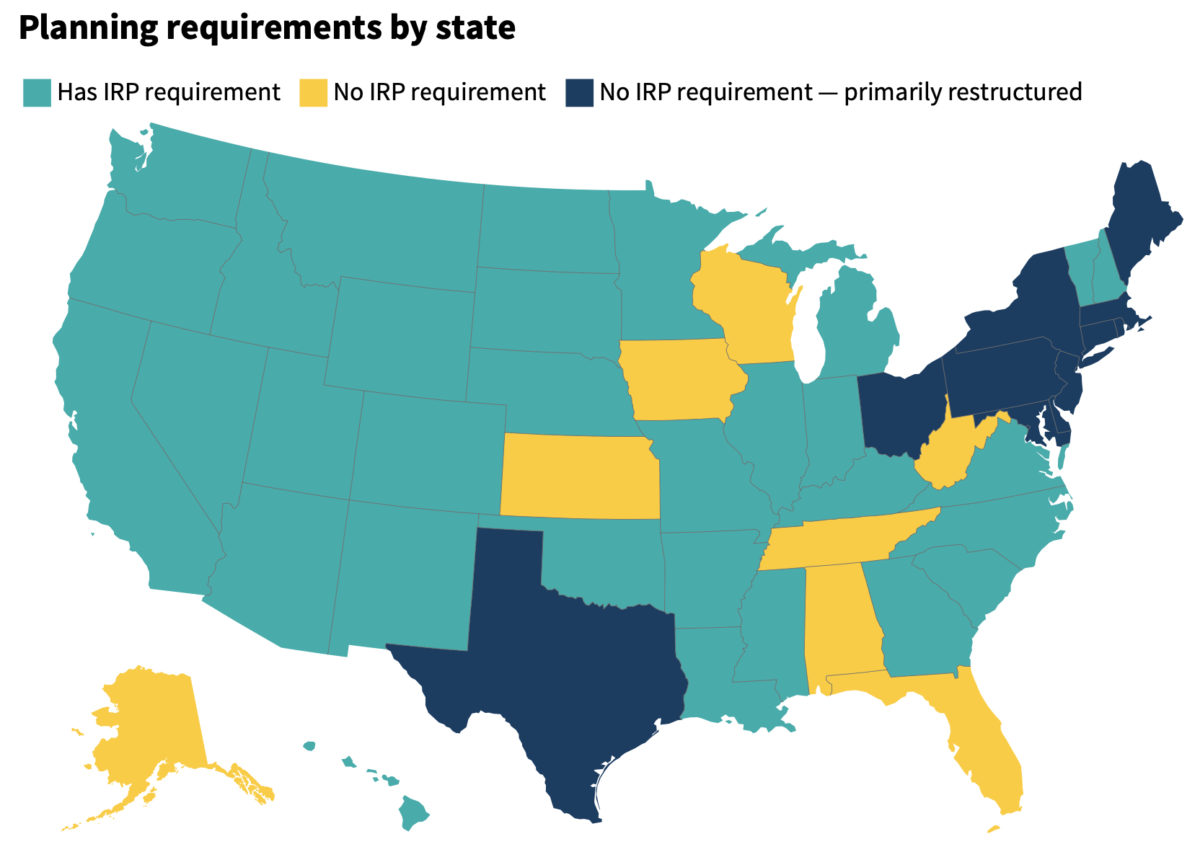The nonprofit consultancy RMI has recommended that utilities include in their resource plans granular projections of the adoption of distributed resources such as solar, storage, and electric vehicles.
States that require utilities to prepare resource plans every few years are shown in light blue in the nearby map.
Several utilities already use third-party models to forecast adoption rates of distributed resources, said RMI. Sacramento’s municipal utility has worked with Clean Power Research to deploy the WattPlan Grid tool, while utilities in California and Minnesota have used the LoadSEER model from Integral Analytics. The National Renewable Energy Laboratory has used its dGen model, which is also available to others, in its utility-level decarbonization studies, and PGE Oregon has used its own in-house model called AdopDER.
Some of these tools are helping utilities avoid the need for some supply-side resources, RMI said.
Modeling the adoption of distributed solar and storage is one of several recommendations that would level the playing field for solar and storage in the planning process, which RMI presented in its report “Reimagining resource planning.”
Utilities should implement a distribution system planning process to complement resource planning, the report advised. Distribution system plans, already required in 21 states, can include hosting capacity analysis to identify circuits that can handle more solar without upgrades, the report said. The plans can evaluate “non-wires alternatives,” such as distributed solar and storage, that can defer or substitute for grid investments. And distribution plans can update the interconnection process for distributed solar and storage.
Including all-source solicitations in the planning process is required by “leading jurisdictions,” the report said. “Effective” all-source solicitations evaluate combinations of bids as portfolios, “to understand which combination of bids can meet the described need and perform best.”
Solicitations can be used at the beginning of the planning process, when the bids showing actual market costs for resources can be used instead of “assumed” costs, the report said. Or the generation needs identified through the planning process can be used to structure an all-source solicitation, “as the intended and integrated outcome” of the planning process.
Some of these recommendations would reduce opportunities for utilities to bias their resource plans against solar and storage.
To avoid burdening state utility commissions, the report suggested that some recommended tasks could be undertaken by other state agencies. A state’s energy agency, for example, could project adoption of distributed solar and storage, while a state transportation department could project adoption of electric vehicles, the report said.
“Instead of adding more requirements to the integrated resource plan, there is an opportunity to define additional planning activities with their own objectives, and the links among them,” the report advised, suggesting specific stages in the planning process at which the results of other planning activities could be incorporated.
Among other suggestions in its 76-page report, RMI said utility planning processes should “meaningfully” engage stakeholders, consider air quality and health impacts of various types of generation, and define and map disadvantaged communities to assess these impacts.
This content is protected by copyright and may not be reused. If you want to cooperate with us and would like to reuse some of our content, please contact: editors@pv-magazine.com.








The RMI report will not find a sympathetic response in those Republican-controlled states actively putting a stick in the spokes of any transition to renewable energy. One of our political parties has adopted resistance to climate change action as an article of faith.